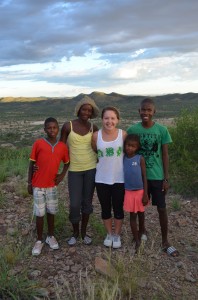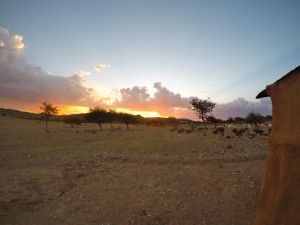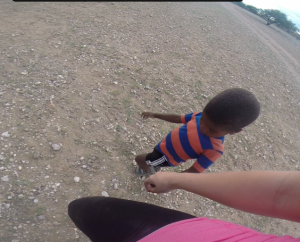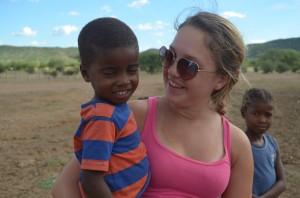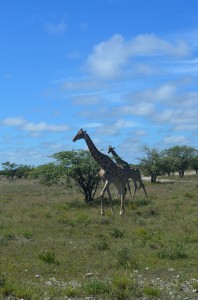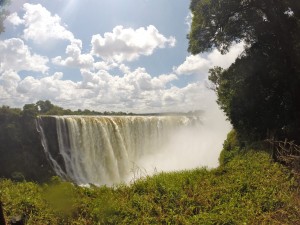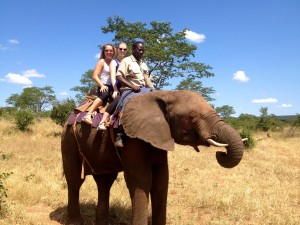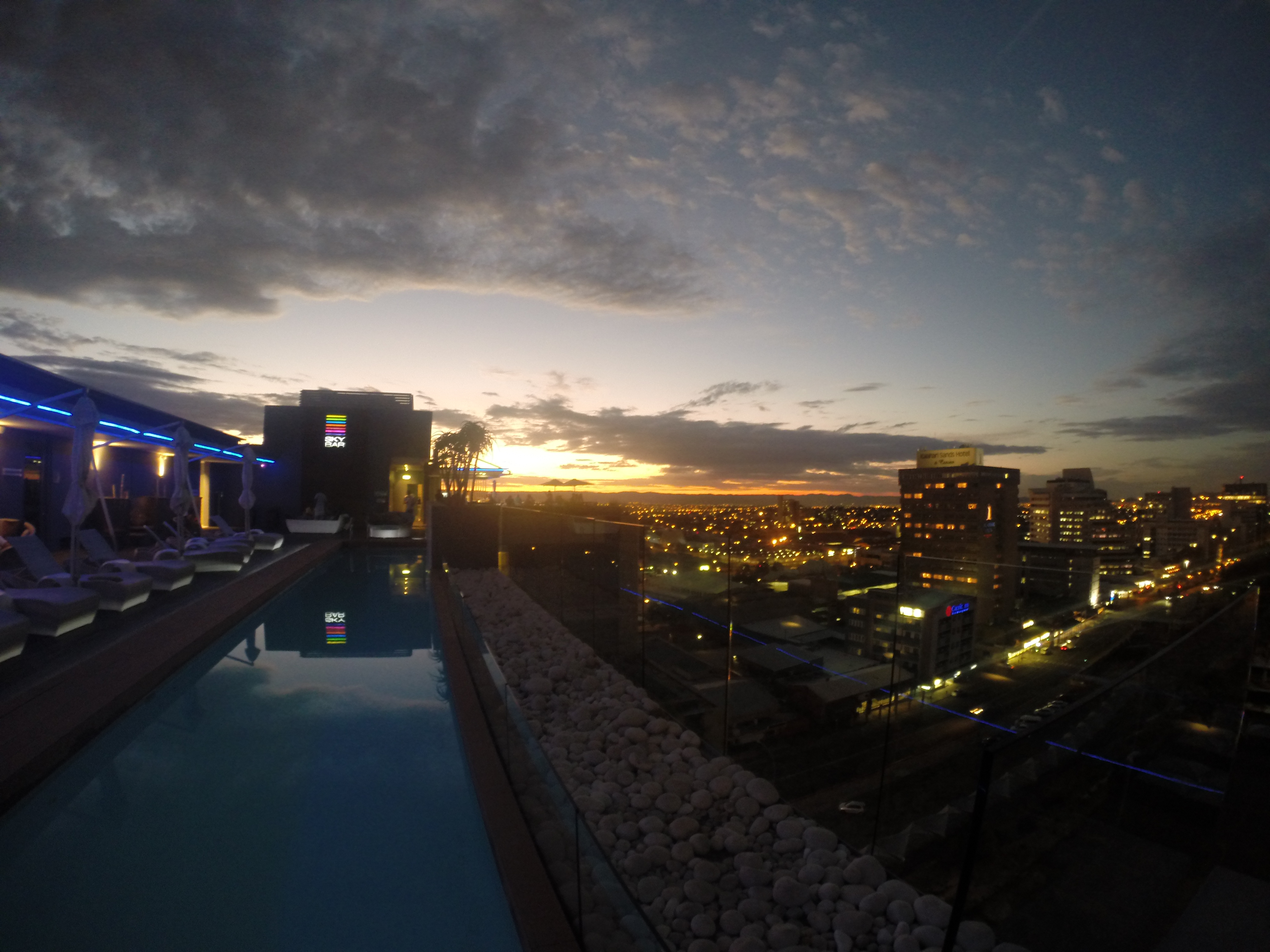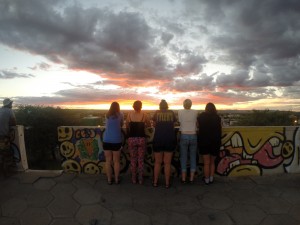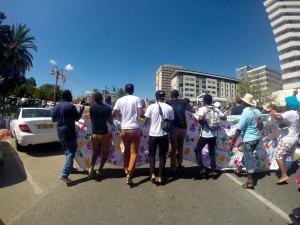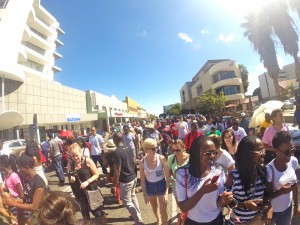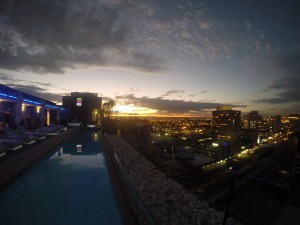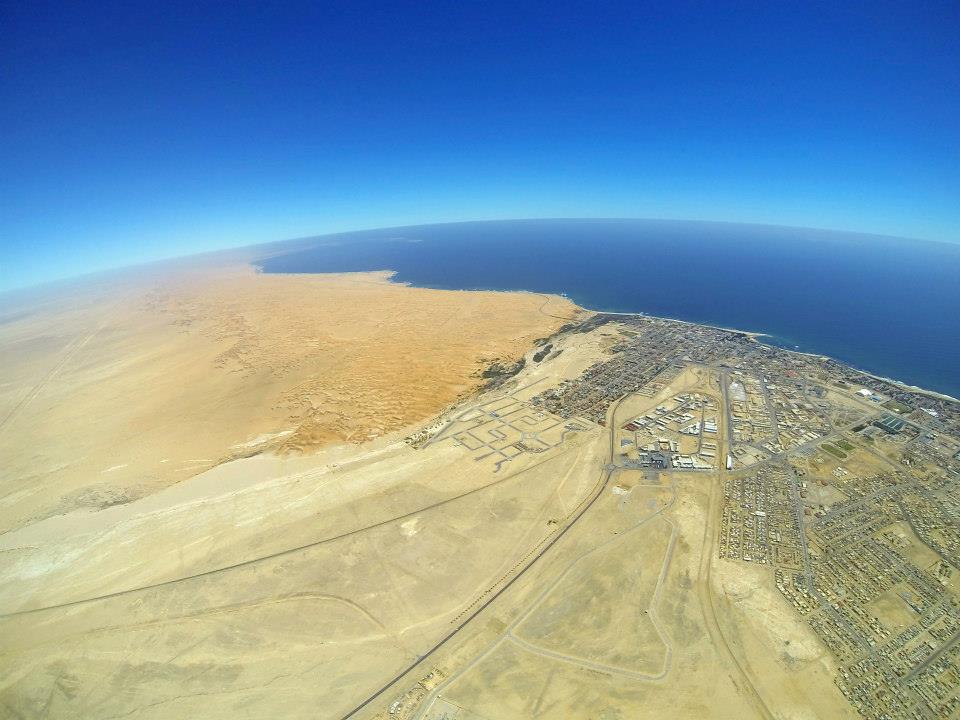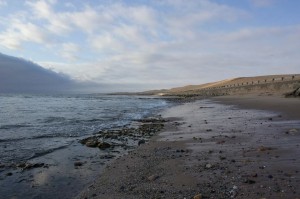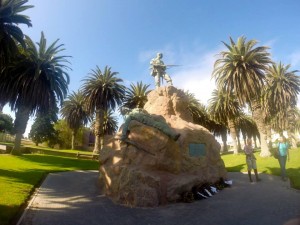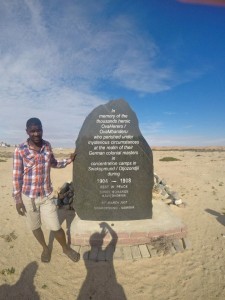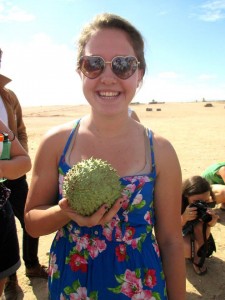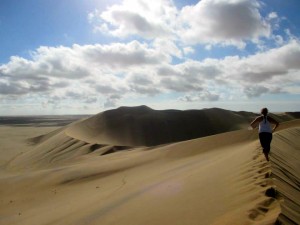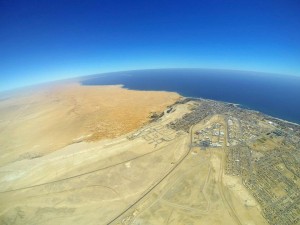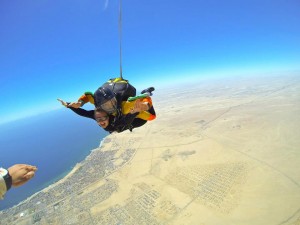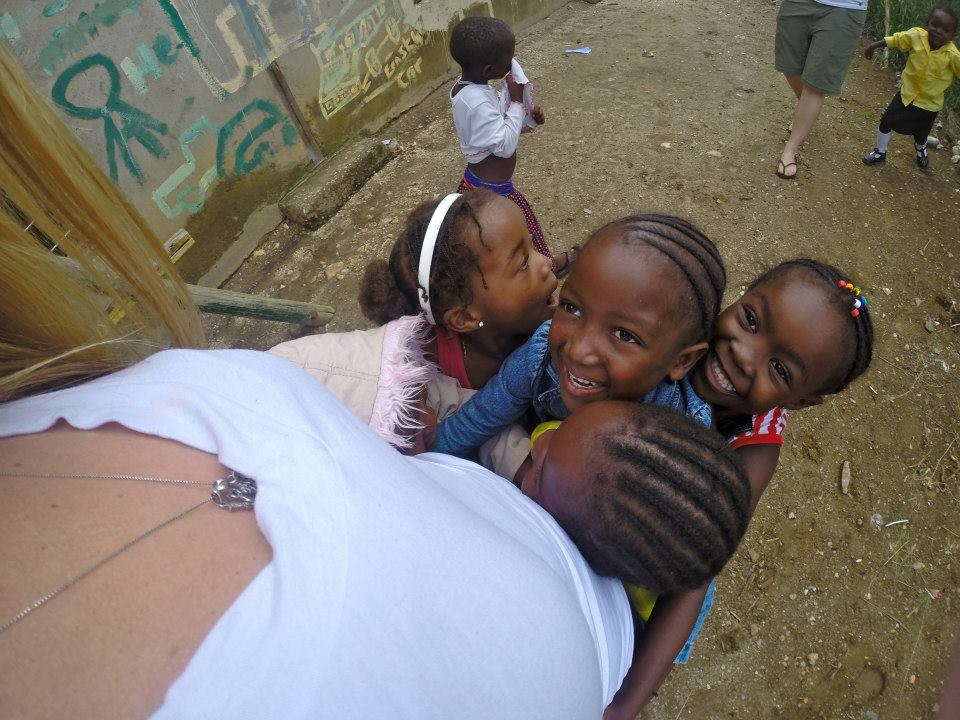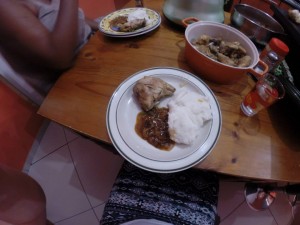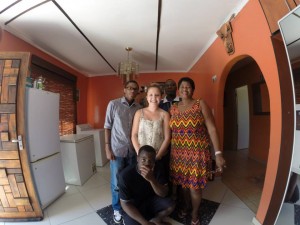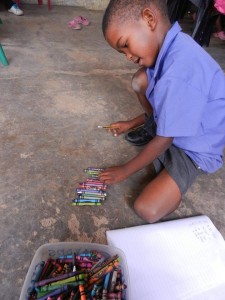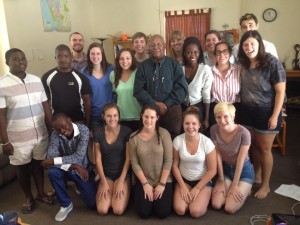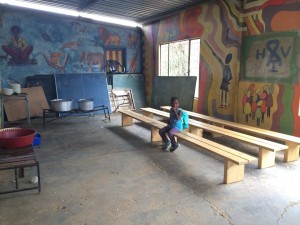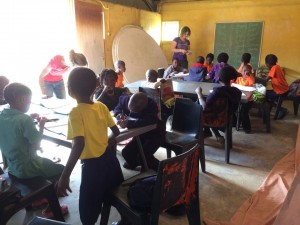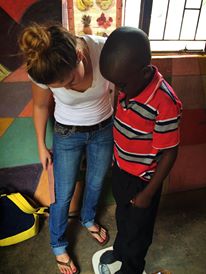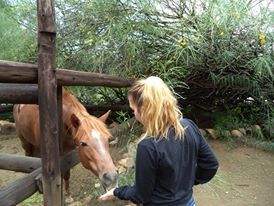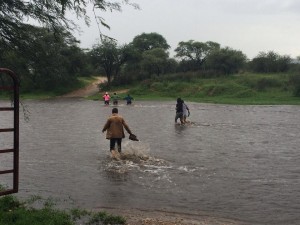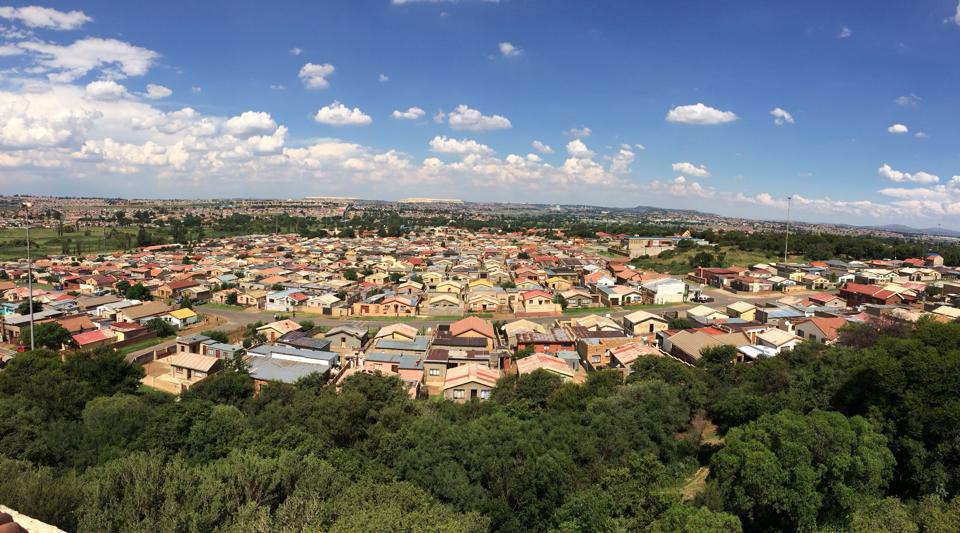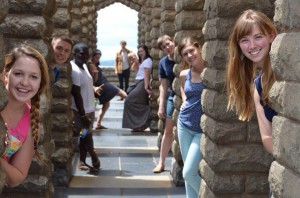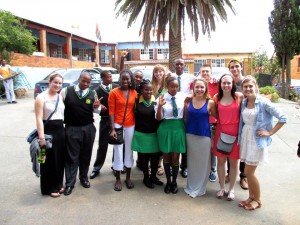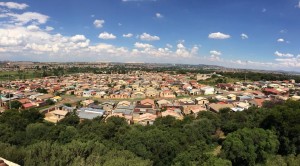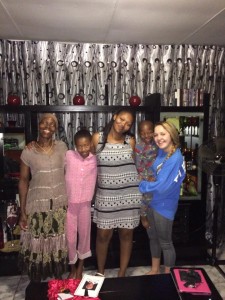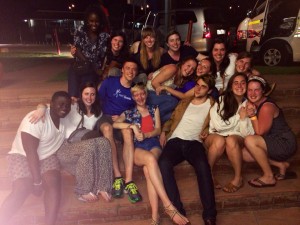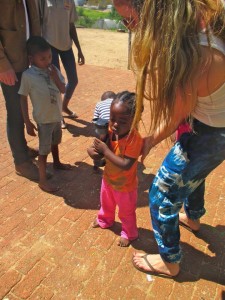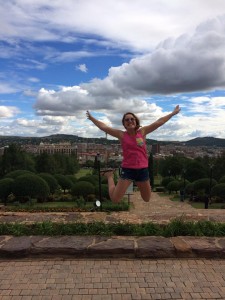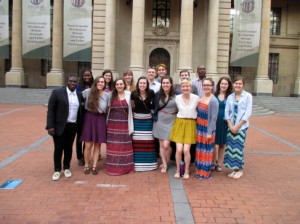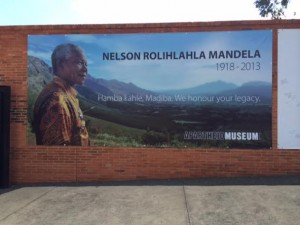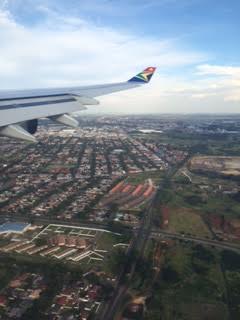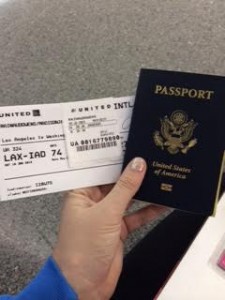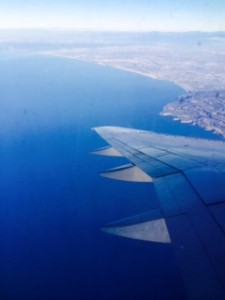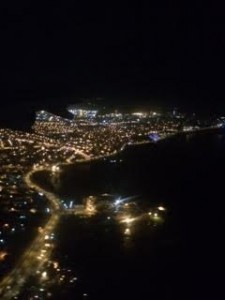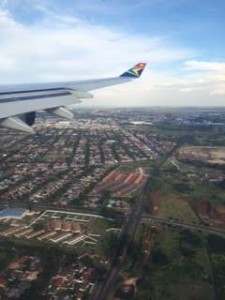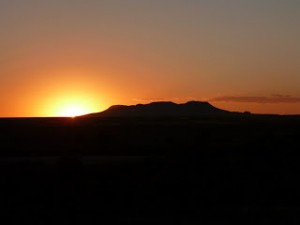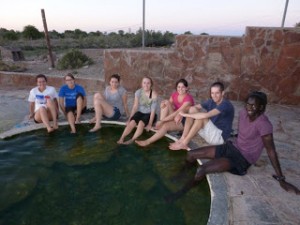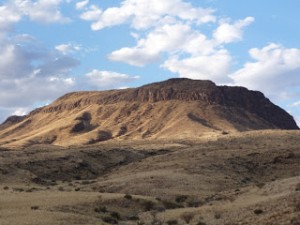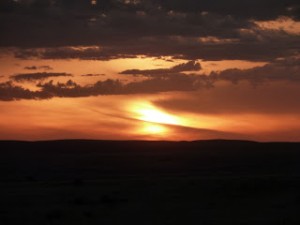My apologies for the lack of posts recently – I’ve been out of internet touch for a little while now. So bear with me as this post will be quite long. These past weeks have been some of the greatest of my life, ones I will absolutely never forget. We left from Windhoek on the 18th, en route for our last and final home-stay on a farm in northern, rural Namibia. We set out for Khorixas and once again, to say I was nervous to meet my new family would be an understatement. Knowing there was only 1 guaranteed English speaker in each home, and my lack of success speaking Damara, I wasn’t quite sure how I’d navigate through the week. I was placed on the Inhoek farm about six kilometers from the town of Khorixas with five other students- each of us with a different family to call our own. (We were on a family farm so most of the houses were all related to each other in one way or another.) My nerves were quickly forgotten as I was welcomed by my host mom Dena, two sisters (Buyela 23, Immseline 9) and three brothers (Sydney 17, Delvin 14, Marvelous 3).
As the week went on, all of the young kids on the farm spent time together – whether it was sitting around talking or dance parties at night, I constantly found myself smiling and laughing uncontrollably. Each morning when I woke up and went to use the bathroom (a bush) and brush my teeth, I’d hear the pitter patter of footsteps behind me. Every time I turned around, I saw Marvelous running up behind me and as he got closer his little hand reached up and grabbed my two fingers. Marvelous didn’t speak or understand a word of English, but he’d always greet me with a smile and we’d walk hand in hand (or hand and finger) everywhere we went. This happened every morning and each time, I couldn’t suppress the large smile that overcame me. Needless to say, as the days passed I came to love this family as my own. We spent days playing soccer, going on hikes, playing volleyball over the clothes line, riding in donkey carts, learning new games, telling stories, milking cows, herding goats & sheep, and whatever else we could think of. The sunsets each night were absolutely breathtaking, unlike any I’d ever seen before. I found myself dreading the day we’d have to say goodbye.
On one of the days, we decided we’d pass the time by walking into town. We rode in on one of our host dad’s trailer because he figured we wouldn’t want to walk all the way there considering the heat. We spent a little time in town eating ice cream and just walking around. On our way back we took a “short cut” that ended up being more of a long cut, but it left us laughing later that night. Every night after dinner we’d all gather at one house and have a dance party under more stars than you could ever imagine; we’d dance for hours until we couldn’t dance anymore. As I was admiring the stars one night, one of the girls asked me if we had stars in America. I laughed a little and told her we did, but we don’t get to see them like theirs. We told the story of Cinderella and Goldilocks and they told us a few of their traditional stories. All of the young kids our age spoke great English and they made an attempt to teach us more Damara. I think I can successfully count to 10 now. Much to my dismay, the days passed, and the Monday I was dreading finally approached. I’d be lying if I said I didn’t have to fight back tears knowing I may never see these people again, but I can’t help but be filled with joy knowing I got to spend a week with such an amazing group of people, filled with joy knowing I’ll always have a family in Namibia.
After our week in Khorixas, we spent three days camping and going on safaris in Etosha. On our multiple game drives we saw zebras, giraffes, an elephant, cheetahs, lions, rhinos, wildebeests, warthogs, a hyena, and lots and lots of springboks! Following Etosha, we headed even further north to a guest house for the next two nights. Though the previous weeks were incredible, I have never been more happy to see a bed in my entire life. We visited a few museums in the most northern part of Namibia before we made our way to Tsumeb to catch a bus to Victoria Falls for spring break.
…But before that could happen we had a 9 hour wait for our bus to arrive. As we sat and waited we wondered why everyone was staring, until we realized there was a group of 14 of us sitting in a median under a tree with lots of luggage. To pass the time, we walked to the grocery store, climbed the tree and played cards. Much to our surprise the time passed quickly and we made a mad rush to the bus when we finally saw it arrive. 12 hours later we were at the Namibian/Zambia border and spring break was officially beginning. Another two hours passed and we finally arrived to Vic falls. Most of the group stayed in Zambia for two nights before heading to Zimbabwe but myself and two others went straight to Zimbabwe. Little did we know the walk from the border to the customs office was about a mile or so from the border. Not so bad until you remember you have to carry your 30 pound bag in the heat of the day.
Once we finally arrived to our hostel the activity planning was immediately in order. The hostel we stayed at was absolutely beautiful and just a 15 minute walk from town. Our first night in Victoria Falls we went on a sunset cruise on the Zambezi river, and to add to our list of animals we saw hippos and crocodiles. The next few days included a trip to see the falls, elephant riding, zip lining, and canoeing on the Upper Zambezi. It’s no surprise why Victoria Falls is one of the seven natural wonders of the world. Seeing the millions of gallons of water pour down minute after minute, creating rainbows every where you looked was awe strikingly beautiful. We spent a few hours admiring the falls and got absolutely drenched from the rain the falls created. Knocking one more thing off my bucket list, elephant riding was amazing too. Sam and I rode on a 24 year old girl elephant named Star. She was pretty small compared to the others and had a short trunk because she was attacked by a lion when she was just a baby. After the hour long ride, I got to sit on her leg while she knelt and feed her some pellets. An elephant is a lot more comfortable to ride than you would imagine, and it was a funny feeling when she sucked the pellets through her trunk off of my hand. Of course, nothing compares to skydiving, but zip lining over the gorge was stunning as well. Canoeing down the Zambezi was loads of fun and very peaceful at the same time. Sam and I got caught in a few rapids but it definitely made it more exciting.
As I sit on the 24 hour bus ride home to Windhoek, I’m sad to say my spring break is coming to an end, but I know it will most likely be the best of my entire life. I look back on these past two and a half weeks with great memories, so many new faces met, and so so so much happiness. I learned so much about myself and the world as a whole especially in my first week with my family. The week I lived with in Khorixas vs. my life in Claremont and Valparaiso are obviously different, but I’ve come to love so many aspects of each. No way of life is better than the other, none right or wrong – just different. It’s hard to believe that a month from today I’ll be in Cape Town. Time to make the most of my last month in Windhoek.
Thanks for reading.
Xoxo
Maddy
Ps- since I was gone and not able to post it, here is what my second month looked like:

